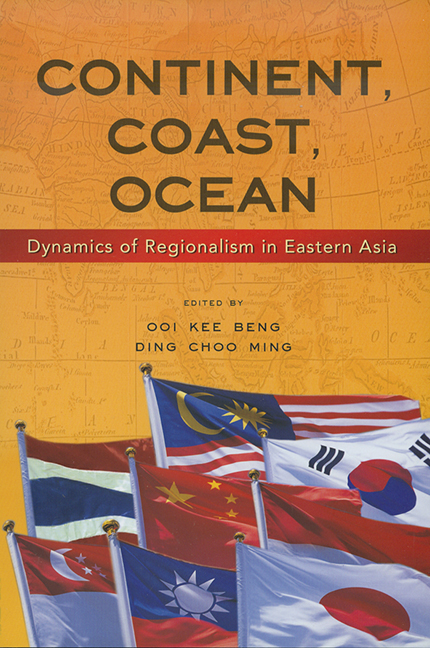Book contents
- Frontmatter
- Contents
- Foreword by Shamsul A.B.
- Contributors
- Introduction
- PART ONE PUTTING JAPANESE IMPERIAL HISTORY TO REST
- PART TWO THE ECONOMICS OF REGIONAL INTEGRATION
- PART THREE INTER-REGIONALISM AND REGIONALISM
- 5 Alliance and Arms: A Study of the Change in U.S. Arms Transfer to East Asian Allies, 1950–2001
- 6 A Multicultural European Union and Its Implications for Asia
- 7 The Future Prospects of Multilateralism in Southeast and East Asia
- 8 The Historical and Cultural Legacy of Relations between Southeast Asia and East Asia, with Special Reference to Malaysia
- PART FOUR NEW KNOWLEDGE, NEW PROBLEMS, NEW SOLUTIONS
- Index
8 - The Historical and Cultural Legacy of Relations between Southeast Asia and East Asia, with Special Reference to Malaysia
from PART THREE - INTER-REGIONALISM AND REGIONALISM
Published online by Cambridge University Press: 21 October 2015
- Frontmatter
- Contents
- Foreword by Shamsul A.B.
- Contributors
- Introduction
- PART ONE PUTTING JAPANESE IMPERIAL HISTORY TO REST
- PART TWO THE ECONOMICS OF REGIONAL INTEGRATION
- PART THREE INTER-REGIONALISM AND REGIONALISM
- 5 Alliance and Arms: A Study of the Change in U.S. Arms Transfer to East Asian Allies, 1950–2001
- 6 A Multicultural European Union and Its Implications for Asia
- 7 The Future Prospects of Multilateralism in Southeast and East Asia
- 8 The Historical and Cultural Legacy of Relations between Southeast Asia and East Asia, with Special Reference to Malaysia
- PART FOUR NEW KNOWLEDGE, NEW PROBLEMS, NEW SOLUTIONS
- Index
Summary
INTRODUCTION
It should be mentioned from the outset that the discussion here is slanted more towards a Southeast Asian perception than an East Asian one. Understandably, if the discussion were to be led by someone from East Asia, it would probably be the other way round. But that is putting it very generally. Neither Southeast Asia nor East Asia is a homogeneous entity. The need to generalize in intellectual discussions, while unavoidable, is also full of pitfalls. Scholarship is quite often, for one reason or another, coloured by sentimentalism that can result in more being seen than there is to see. On the other hand, if the distant past is almost faded from memory or is clouded by contemporary prejudices, its significance may be underplayed. It is difficult at any rate to deny that even the remote past is never really obliterated. Bali, for example, one of Indonesia's over 17,000 islands, has retained its Hindu culture and religion within a country with an overwhelmingly Muslim population. Inversely, in contemporary Javanese culture, a thick layer of Hinduism is still recognizable. Historical and cultural links have greater lasting impact if they are authentic rather than mythical, and if each succeeding generation is able to consciously cherish them.
The discipline of history is concerned with the total past — from as far back as it is possible to imagine up to the recent moment. However, no single historian can hope to cope with the total past. To help simplify matters, a broad distinction is often made between “proto-history” and “pre-history” on the one hand, and “history” on the other. The historical period begins when scholars can rely on sound documentary evidence. The period prior to that is by and large the domain of archaeologists who primarily conduct studies based on artefacts, relics, buildings and monuments. It is also common when discussing history to use categories such as the distant/remote past and the recent past, or ancient and contemporary/current history.
Neither Southeast Asia nor East Asia (especially China) lacks ancient artefacts and sites. However, documents are not easily available for the pre-fifteenth century period with regard to relations between the two regions. Based on what is available and what is still perceivable of the cultural scenario today, one cannot but surmise that there was, in the distant past, profound cultural links between South Asia and Southeast Asia.
- Type
- Chapter
- Information
- Continent, Coast, OceanDynamics of Regionalism in Eastern Asia, pp. 156 - 170Publisher: ISEAS–Yusof Ishak InstitutePrint publication year: 2007



